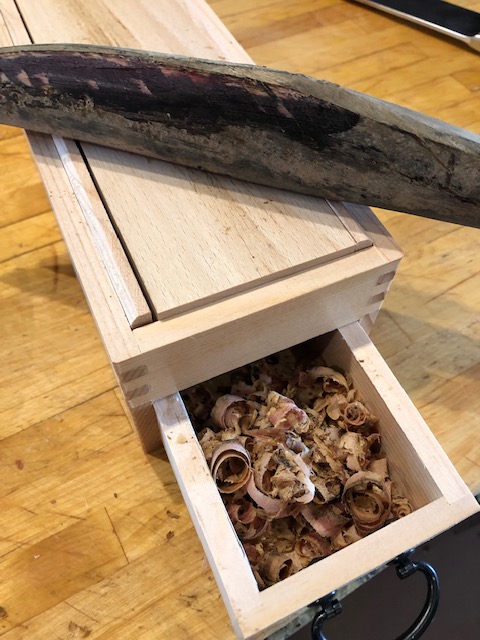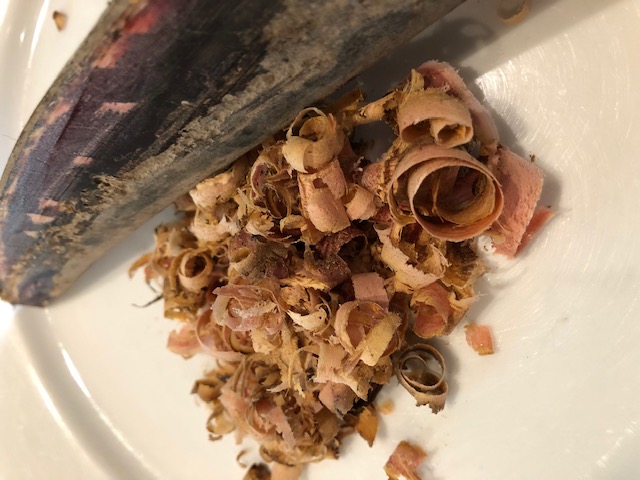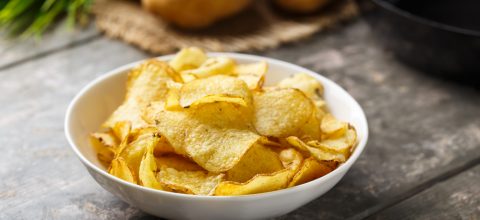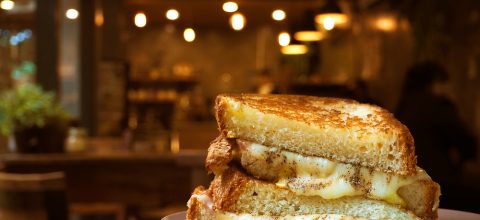A couple of issues ago I talked about meatballs. One in particular that is made from octopus and is not really a meatball but more of cross between a fritter and a rolled pancake is takoyaki. It has shown up in my world a couple of times after talking about it. If you can, check out the Netflix series Street Food about the 60+ year stall run by mother and son. The chop stick action alone is worth the watch.
However, this issue is not about takoyaki-rather, one of the common garnishes usually served with the dish. If you have the opportunity to enjoy this dish, look for the shimmer and motion of the garnish. Yes, the garnish moves, and it is this item added as the final touch that brings a smile to my face. It is freshly shaved katsuobushi. One of the hardest foods on the globe, this dried, fermented and smoked skipjack tuna loin is shaved razor thin, and when placed on top of the hot takoyaki, it moves and shimmers from the thermal waves coming off the takoyaki.
That little touch-when done right-is a hallmark of the delicacy and intricacy of Japanese cuisine. Think about it; we go to restaurants to see the show with open kitchens, spit roasting, and all the action. The Japanese have learned over thousands of years to bring the show to the table without the bling. A core element of the cuisine is used as a foundation as well as on the final touch. This concept of utilizing a few seasonally driven ingredients and getting the most of it is what we hear all the time in modern cooking. For kaiseki chefs, this is the norm.
We have all seen bonito flakes on the shelves in the local market. Bonito tuna is the cheaper more quickly product for general use. It doesn’t have the same umami and complexity of the traditional product that uses older, more mature skipjack tuna. The reason is that the process of making true katsuobushi can take months. The process is simple if you want to try it at home. Take the tuna, simmer it for four hours, butcher it down to four loins, and using fish paste, seal the nicks, cracks and holes you will inevitably make from not butchering for a while. Then cold smoke the fish for about month. I would definitely have a cooler or two on hand-this isn’t your normal competition smoking weekend. Once that is done, rub the now cooked and smoked loin with mold similar to koji and let it ferment for about six months in a combination of humid and dry conditions indoor and out. There you go.
So, I had to make the choice-do the long haul to make my own or buy the commercial equivalent. I went down the middle and bought my own traditional piece. It wasn’t easy to find and my own katsuobushi kezuriki to shave my own and make my own magic.

Dashi, the primary stock and foundation of the cuisine, is now made on demand in my house in minutes with konbu and the simmering katsuobushi. The flavors are completely different than packets of instant Hon-Dashi or something pre-shaved in the bag.

Getting true flavors right is so important; opening a finished bag of simmering sauce for tacos or an instant pack of soup stock is convenient but not really an experience of cultural foods, as they should be. Soup is essential to a true kaiseki meal. There is a feeling of comfort and richness from sipping a perfectly prepared bowl of miso soup with sushi. We take it for granted sometimes, then realize there is more to it and more you can get from it by truly understanding the passion behind those simple ingredients of broth, miso, tofu and seaweed.
Beer
There are a couple of independents making waves in the Japanese/Asian-style beers. Small brewpubs and ramen bars are offering a better selection rather than the typical mass-produced pale lagers. Here is one that offers a unique range of beers:

They are an upstart brewery in Indianapolis and their brews are available in and around Illinois.










